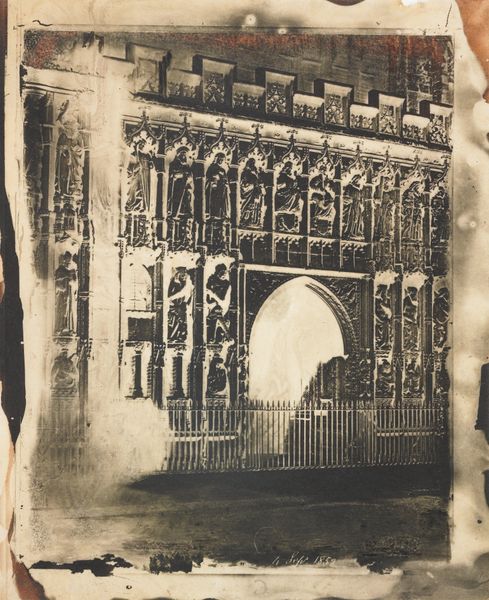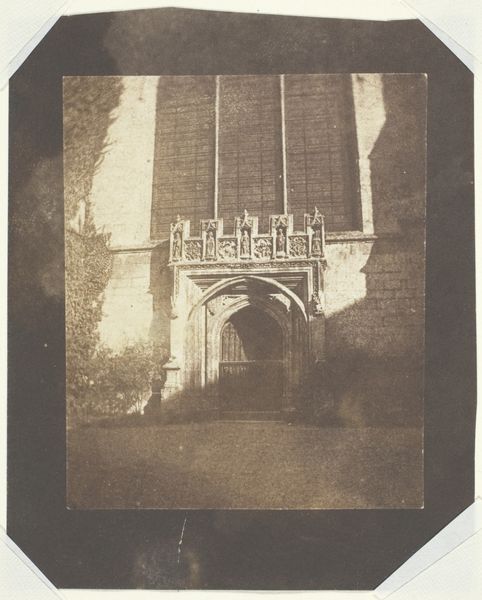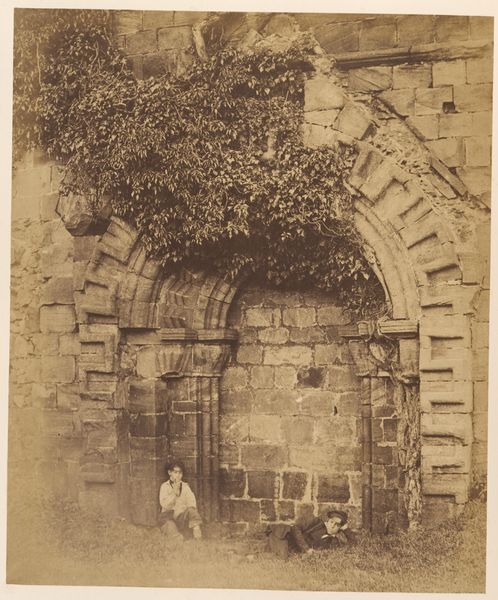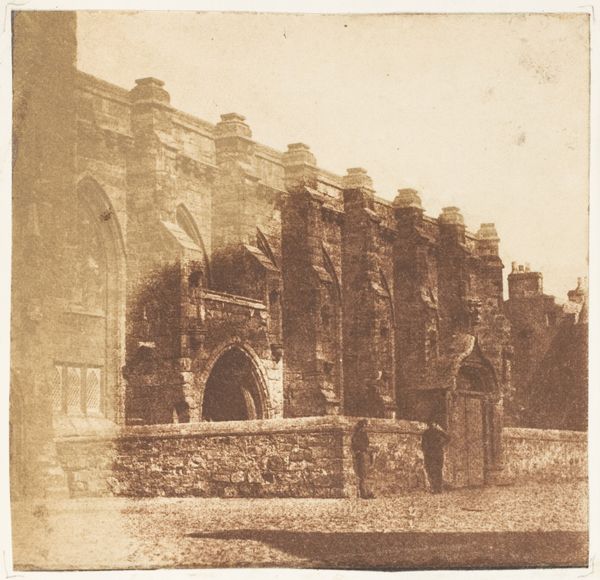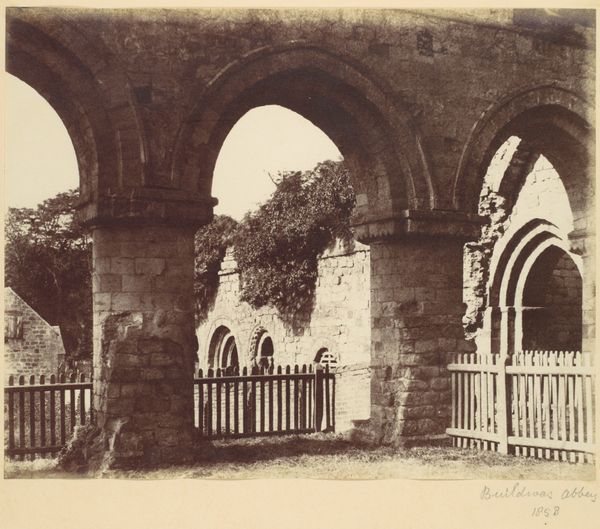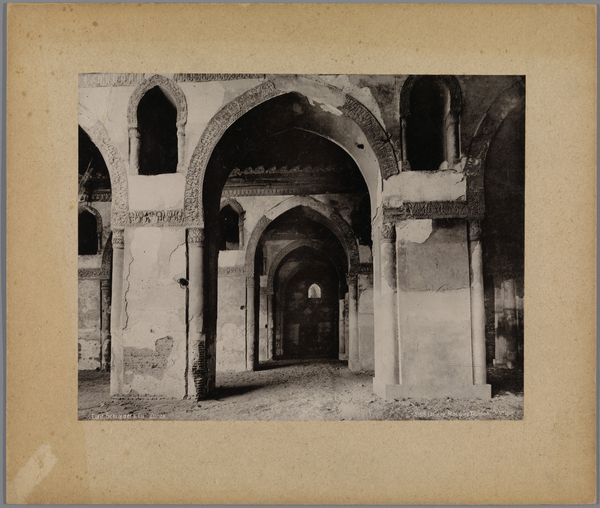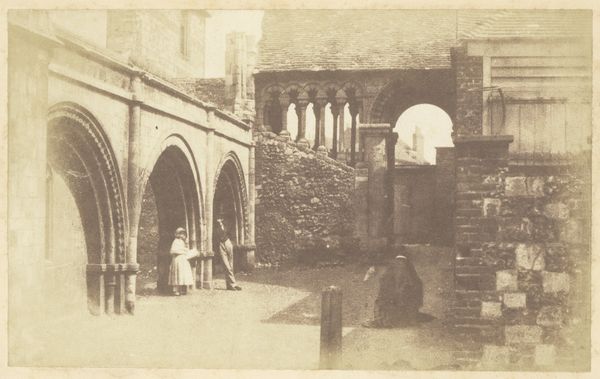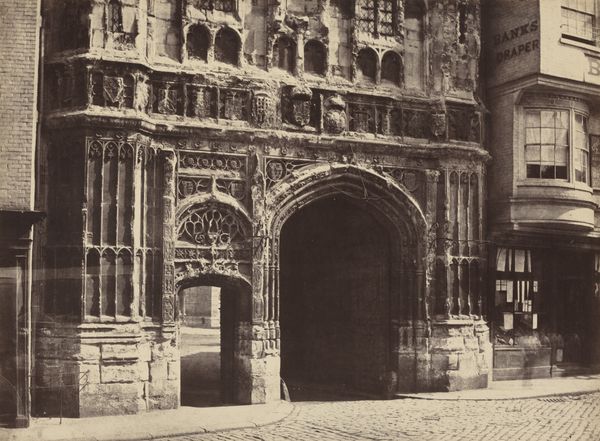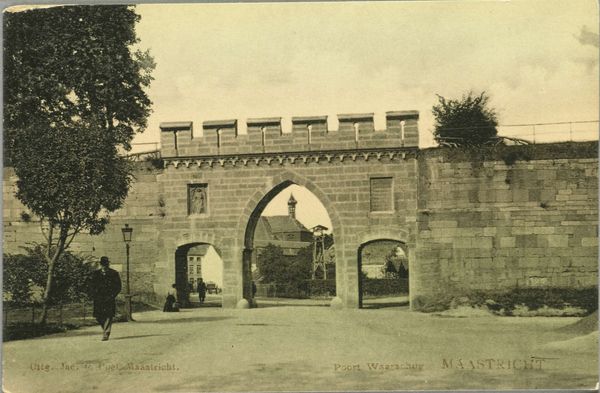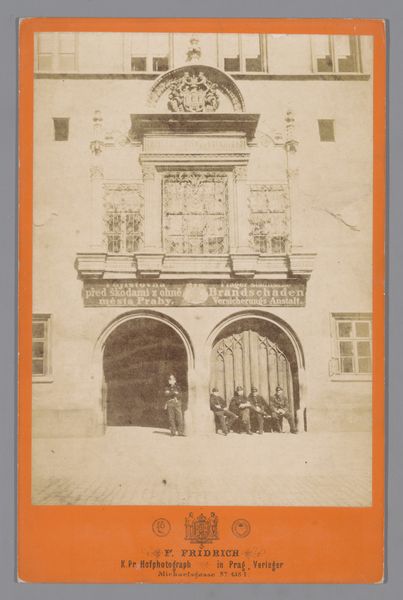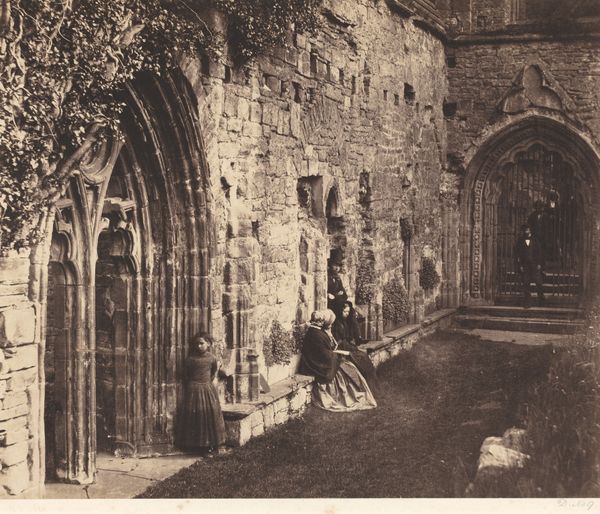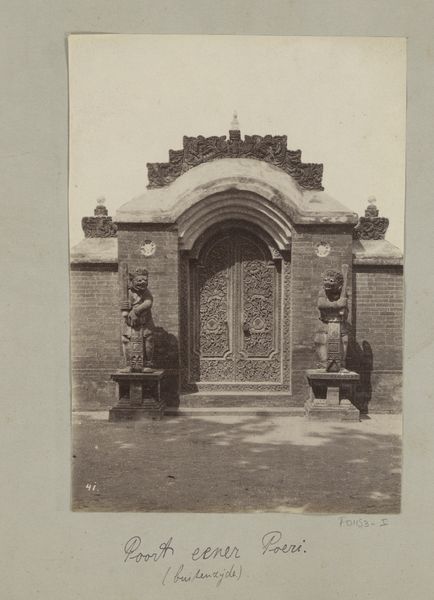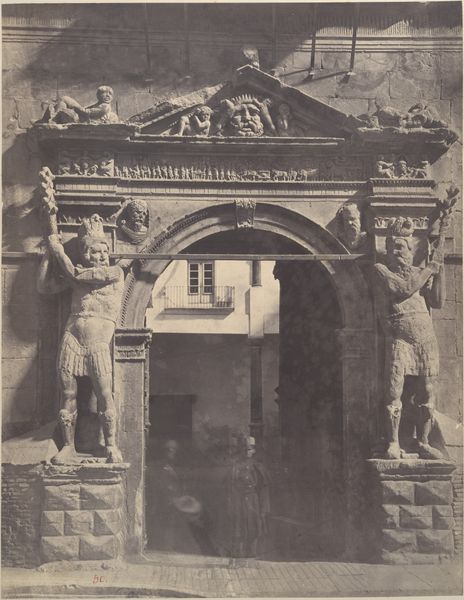
print, daguerreotype, photography, architecture
# print
#
landscape
#
daguerreotype
#
photography
#
romanticism
#
19th century
#
architecture
Dimensions: overall: 18.8 x 22.7 cm (7 3/8 x 8 15/16 in.)
Copyright: National Gallery of Art: CC0 1.0
Curator: This photograph by William Henry Fox Talbot, taken in 1843, is titled "An Ancient Door in Magdalen College, Oxford." It's a gorgeous example of early photography, capturing a weathered stone doorway. Editor: It certainly exudes an aura of mystery. The sepia tones lend it an antiquated feel, almost as if we are looking at a memory. What strikes me most is the sheer mass of the stonework looming above the entrance; it evokes the long history of exclusion. Curator: The image invites contemplation on thresholds, both physical and symbolic. Doors are powerful archetypes in our collective unconscious, representing transitions and access to the unknown, protected by angels, saints, or other guardian figures watching from above. Talbot masterfully utilizes light and shadow to create depth and enhance this visual storytelling, imbuing the doorway with profound emotional and spiritual significance. Editor: And in its way, this access is also limited to specific social categories—academics, religious figures, and landowners; it's all quite intertwined. The presence of what appears to be a barred gate hints at a complicated tension between welcome and inhospitality; the building welcomes knowledge and intellectual growth, but historically for whom? Curator: The barred gate adds an intriguing layer, hinting that maybe, access wasn’t just granted to everyone, literally blocking their passage into knowledge, so perhaps there are underlying anxieties about outsiders penetrating sacred and closed communities. The composition reinforces its historical significance and exclusivity. Editor: It is an excellent example of visual gatekeeping, something we are still seeing in society today. Fox Talbot captured not just a door, but a whole ideological system built of classism. The photograph, in turn, becomes a document, or even evidence, of historical power structures. Curator: Indeed. This doorway becomes an archive of cultural anxieties and societal inequalities expressed through symbolic barriers. Talbot reveals how something seemingly innocuous can serve to control the ebb and flow of both tangible and symbolic mobility, prompting ongoing societal dialogue. Editor: That's a powerful point. I'm left considering how photographs themselves play a role in constructing our understanding of the past and how they either obscure or bring to light those power dynamics at play in various sites across Europe. Thank you for this evocative exploration.
Comments
No comments
Be the first to comment and join the conversation on the ultimate creative platform.
